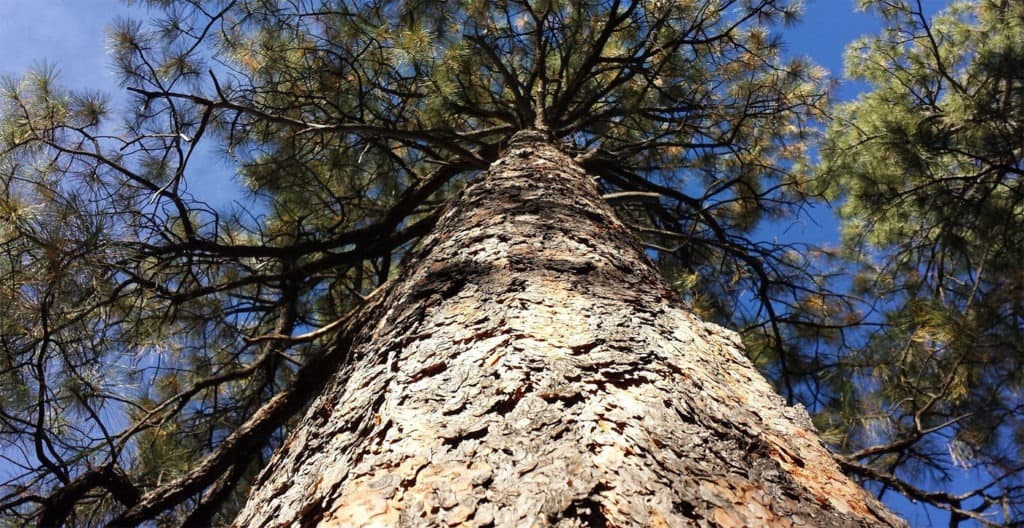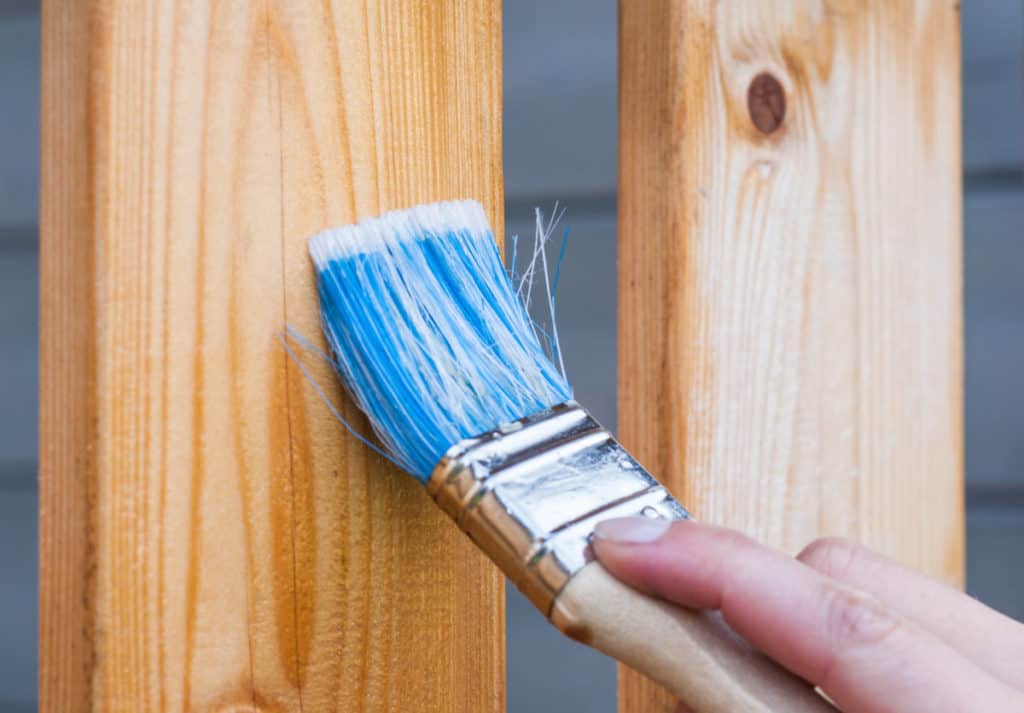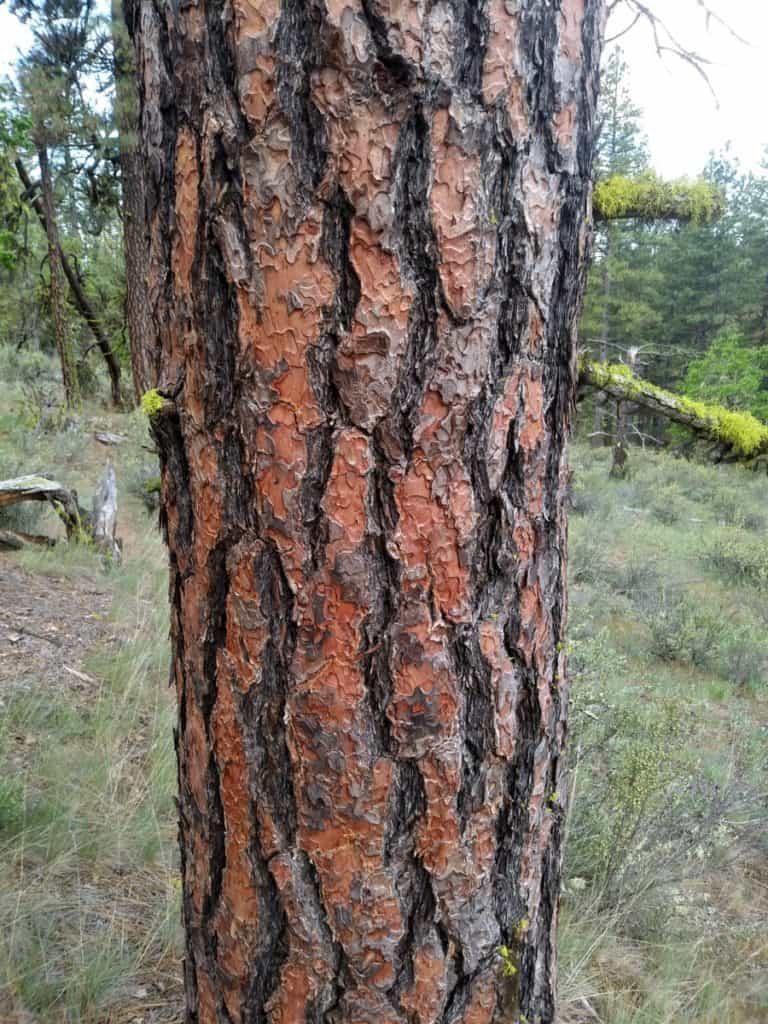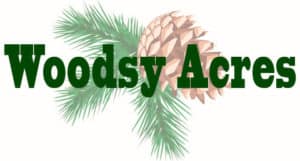
Because we have Ponderosa pine trees I wanted to know what exactly it is good for and other uses. In this article, I talk about the tree as a whole.
So to start with what is Ponderosa pine used for? Although many would call any pine a utilitarian type of wood, there is actually more to Ponderosa Pine then most might think. The clear center portion of the tree which is what they call clear pine gets used for higher-grade interior construction such as molding, interior woodworking like cases built-in and cabinets along with things like blinds, doors, and sashing. The lower graded lumber gets used for practical purposes, crates, boxes, and packaging. Then there’s the knotty Ponderosa pine that for years had this association of only being used in Mid-Century kitchen cabinets, dens, and rustic cabins. There’s a comeback in popularity where is getting used more often in both traditional and contemporary settings. Where there is wood used as a décor element, knotty pine will often appear. It is most popular in ceilings, flooring, paneling, cabinets, and the popular country look.
Ponderosa pine works well with woodworking and furniture building. Used for tables, desks, dressers, bookcases, shelves, and much more. Architectural woodwork can include corbels, banisters, and other design elements found in a home with built-ins.
Due to its uniform cell structure, woodworkers and cabinet makers appreciate the scarcity of resin pockets and resistance to slitting. When machined the wood parts fit together snug without binding and with minimal shrinkage.
Although there’s more preferable wood, Ponderosa pine can also be used for building log cabins or used to make log siding along with all the trimming.
Outdoor Projects
The sapwood portions of the Ponderosa pine are often pressure treated with preservatives without perforation. Treated wood is commonly used for outdoor railings, decking, play structures, storage sheds, picnic tables, planter boxes, planters, landscaping, benches and much more.
Finishes

Ponderosa pine does well with most finishes beautifully. Finishes that include stain, paint, varnish, lacquer which unlike some heavy woods do not raise the grain.
TIP: If you plan on painting knotty pine, be sure to seal any knots before painting over them. Otherwise, you could have the knots bleed through the paint.
Attributes of the Ponderosa Pine Tree
The Ponderosa pine is part of the conifer tree family. It’s widely found from southern Canada on down into Mexico and then from the Pacific Coast on out to Oklahoma and even Nebraska. These trees are typically found in higher altitudes from 500 feet and up beyond 7,000 feet. And, located in predominately dryer areas where precipitation is low during the summer months. Where the temperature reaches 100 degrees yet, with extreme winters with deep snow and 40 degrees below zero weather.
The Ponderosa produces needles ranging from 5 to 10 inches long in bundles of three. Its cones are oval and grow three to six inches long and approximately two to four inches in diameter. The cones have outwardly curved spines that are pokey and difficult to handle without gloves. The tree itself has been known to grow as large as 8 feet in diameter. The tallest recorded tree has been reported right around 230 feet, and the oldest tree known was 600 years.
Other Known Uses and Characteristics of the Ponderosa Pine
Native Americans would use the inner bark as a food and its resin to produce a medicinal salve for various ailments such as backaches and rheumatism. They would also put the boughs to use along with the needles for insulation and the roots to make blue dye.
Resin from the Ponderosa tree, among other pine tree species, a spirit or oil called turpentine gets produced through distillation. The most common use of this product is a solvent used in oil-based paints. This solvent is also used as a cleaning agent as well as creating varnishes. It also gets used as source material for organic synthesis. Turpentine also gets added to certain sanitary and cleaning products for its natural antiseptic and fresh smelling properties.
The pine needle found on conifer trees are much like the leaves found on deciduous trees, and both types of trees shed them. The only difference is that the deciduous tree drops its leave every year where conifer trees shed their leaves every 2 to 5 years during the late fall months.
All forms of wildlife including big game like deer and elk use the Ponderosa pine forests for food, protection, and shelter.
Because this wood does not shrink and swell, after being processed, as much as some other pines, it’s valued for close-fitting joinery.
It is also widely used in the home construction industry for framing, outdoor uses after treatment are applied, floor and roof decking.
I just recently learned that besides the bark of the Ponderosa pine being very thick to act as a shield to protect itself again fire, it also has a scent of vanilla or butterscotch.

Ponderosa Pine as Firewood in Your Woodstove or Fireplace
One thing many people will say about Ponderosa pine is that it doesn’t make for good firewood. For a long time, many claimed it’s because of the pitch that makes it not worth burning as firewood. Some still say when burned it creates a dark coating on the wall of the stovepipe called creosote. With time this builds up and can potentially cause a chimney fire. My personal experience with any conifer wood has been very positive and without any chimney fires.
Often, I’ll mix my woods with hardwood and softwood. But for many season’s I’ve ended up with more pine than hardwoods to burn. And because I’m in the NW it’s typically Ponderosa pine and some fir I end up with. I like the smell of pine, even if it seems to burn slightly faster than say Oak or Locust. Yet, I’ve not noticed any big difference when burning a maple or cherry wood.
For More Information Regarding Creosote & Ponderosa Pine
With further research, I found that my suspicion to be right. There are other reasons for creosote to buildup in the chimney and it isn’t from the type of wood you burn.
To learn more please read my article named, Can I Avoid Creosote When Burning Ponderosa Pine?
Conclusion
There is more to a Ponderosa pine tree than what one might first realize. I’ve heard opinions that this type of pine is pretty much nothing more than a cheap worthless wood with little value in the construction or woodworking world. I hope that after reading this article you’ll realize that although Ponderosa pine is inexpensive compared to other softwoods that it does have many valued uses.
